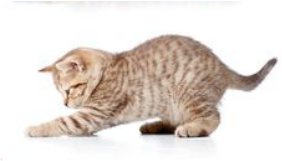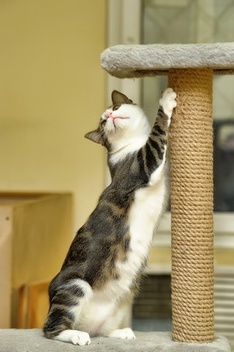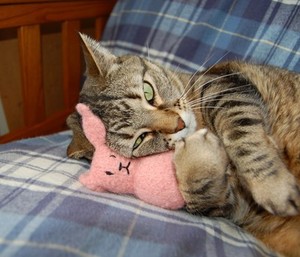Laser Declaws

At Porter Pet Hospital, we perform Laser Declaws which we see clinically improve recovery times and decrease pain associated with a declaw procedure. We encourage all owners that are considering declawing their cat to take the decision seriously when their cat is young. Declaw surgery is ideally done between 4 and 6 months of age and can be done at the same time as spay or neuter since both procedures are relatively short. Cats declawed at our practice and at this young age typically breeze through recovery, have an extremely low incidence of infection or other complications, and continue on through life without an issue. Cats up to a year of age tend to bounce back very well after the procedure. We will not consider declawing after 18 months of age.
|
Owners of adult cats need to try to utilize all options available to stop improper behavior without declaw if possible. Options such as weekly nail trims, plastic nail caps, and multiple scratching post options. Some cats due to aggression or difficult handling are very difficult to maintain.
|
"After almost 25 years of practice, a large number of laser declaw procedures performed, and well over 10 years of follow up on most of my patients, my personal belief is the following:
Many people struggle with the decision with whether or not to declaw their cat. All of us would prefer not to, but I believe that declawing a cat is a better decision than euthanasia or turning an indoor cat outdoors. Some cats, despite having every room filled with toys and scratching posts, will continue to climb drapes, destroy furniture or scratch even the most gentle of kids or owners. Some of our clients have medical conditions, such as diabetes or bleeding disorders, that necessitate a cat being declawed for owner safety. Declawing is necessary in some situations, to allow a cat to be adopted into a loving home or to prevent a cat from being re-homed, placed outside, or being turned over to a humane organization that will often end up in euthanasia (national average ~ 70% euthanasia rate). Risk of complication associated with declaw is extremely low, even long term. Arthritis in hips, knees, and elbows secondary to genetic predispositions and feline obesity is FAR more common than any issues we deal with associated with declaw. Until we have a true handle on cat overpopulation and there are no longer 100's of 1,000's of cats needing homes and shelter, I will do my best to educate owners early about this procedure and always perform declaws in a humane, low risk manner with laser technology. I will also offer exceptional local and injectable pain control to keep cats comfortable during and after their procedure. I do not want my clients to feel guilt if they choose to declaw their cat. Instead, I am proud of their commitment to keeping their cat long term in a safe environment, not turning them out and into "someone else's problem". I know and have clinically observed that with today's technology and medications, cats can recover from this surgery in a very comfortable manner. I want owners to hold their pets in their arms, cuddle them, love them, and share their home with them- giving them the long wonderful life they deserve!"
--Elizabeth Brucchieri, DVM
Not all of us will agree. I can appreciate both sides and understand the plight of many to get rid of the declaw procedure in our industry completely. But my plight is to save and find homes for as many cats as we can and to help owners trying to keep their cats in their home, which all of us would agree is the safest place for a cat. If you still are not sure or have concerns with declawing, there is a great literature review on "The Welfare Implications of Declawing House Cats" at the link below where you can get a lot of additional information. This article is a compilation of research and clinical observations put out by the American Veterinary Medical Association (AVMA) :


